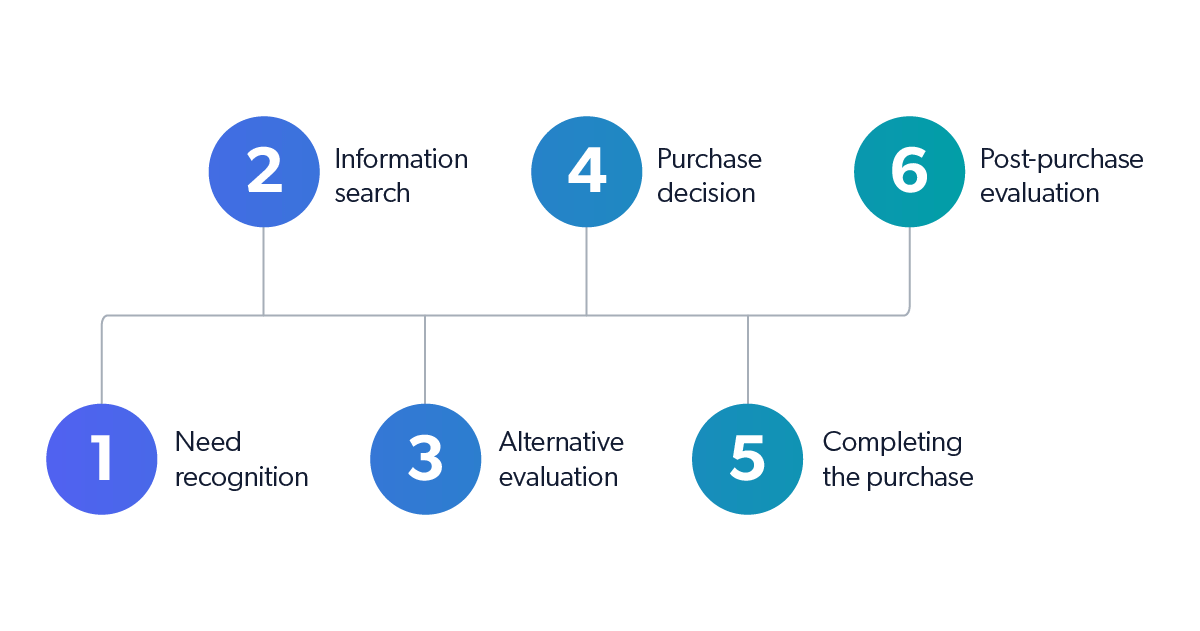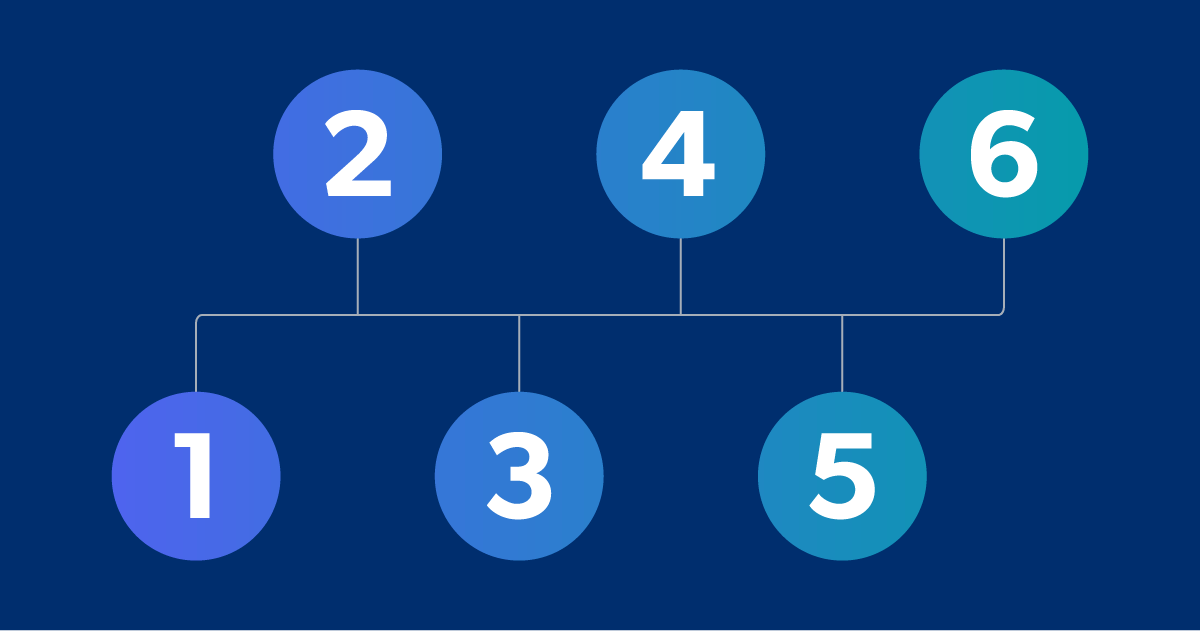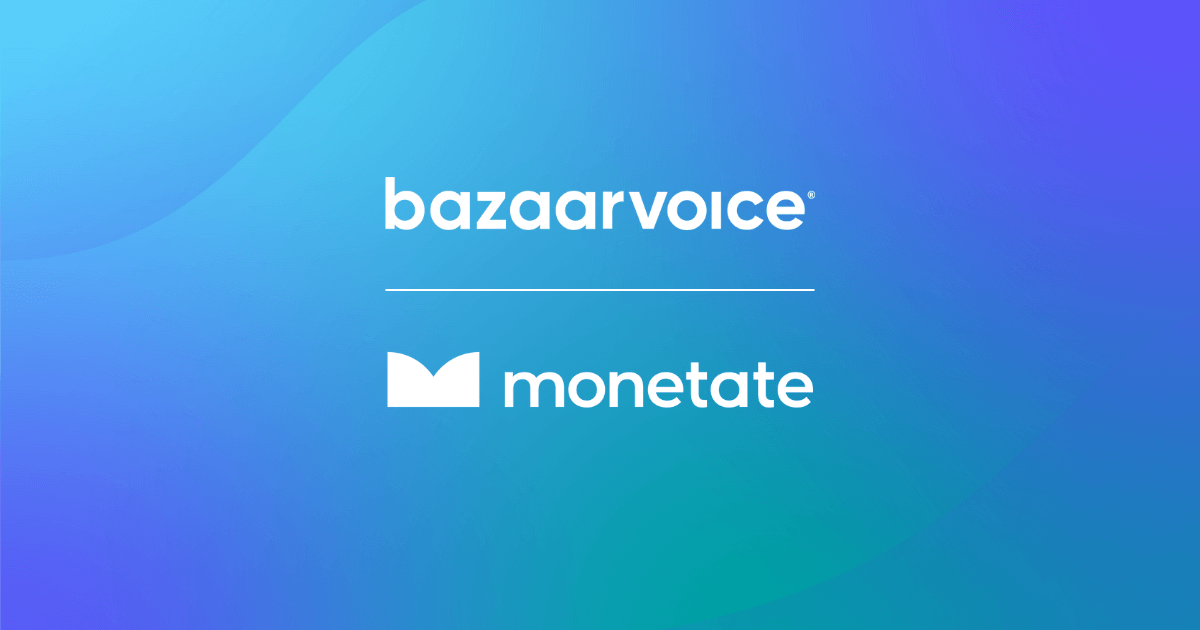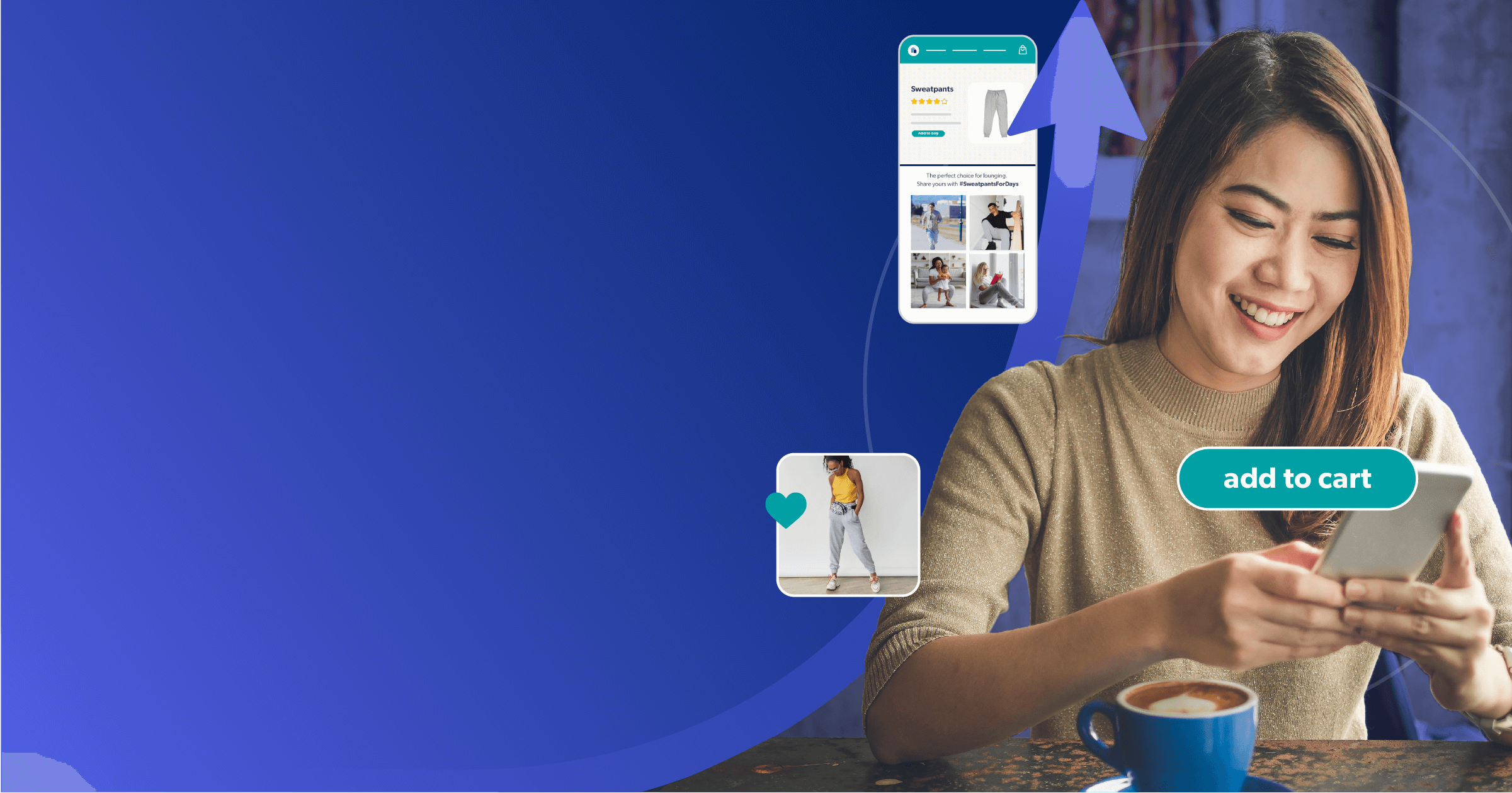January 13, 2023
Imagine waking up and impulsively buying a car, vacuum, or even shoes before you’ve had your morning coffee. If you’re like most people, that’s probably not your style. That’s not your usual path to purchase. You don’t purchase things on a whim. You need more time to think, research, and weigh your options. Yet, when it comes to the consumer buying process, we tend to put a lot of emphasis on the final sale.
But that’s only one decision on the buyer’s path to purchase.
What is the consumer buying process?
The consumer buying process, or the consumer purchase decision process if you’re fancy, is the series of decisions a consumer makes on the path to purchase before becoming a customer.
Understanding how a consumer makes each decision in the buying process is essential for brands and retailers who want to convince shoppers to hit that add to cart button.
The stages of the consumer buying process

Let’s take a look at each of the six stages of the consumer buying process. We’ll discuss ways to optimize the buyer journey and ultimately boost conversion in today’s commerce landscape.
1. Need recognition
A sale officially begins when a customer realizes they have a need or a want.
This recognition can happen because of internal or external stimuli (grocery shopping because you need food for dinner vs. ordering takeout because you just saw an Instagram ad for pizza).
And the causes of these stimuli can be functional (purchasing a new computer because the old one doesn’t have enough processing power for Zoom calls) or social (buying new Zoom shirts to look good on your call).
Regardless, the results are the same. A want now exists.
At this stage, building brand awareness is key. You want your target market to already know and trust your business. Especially in today’s world where consumers don’t just want to shop, they want to support businesses that reflect their own values and beliefs.
So much so, that 82% of shoppers say they’d avoid using a brand again if they lost trust.
2. Information search
Once consumers are aware they have a want, they’re now ready to find out how to fulfill it. And so their search begins, predominantly on search engines or social media. This is where casual browsers are inspired to become buyers.
In this stage in the consumer buying process, it’s imperative to optimize your brand or retail site for search engine optimization (SEO), so you show up in search results. And given that 70% of shoppers use Instagram for product discovery, you’ll want to focus on your Instagram SEO too.
How consumers search and what information they’ll need is based on how much they already know, and what details they find from fellow shoppers. Commerce today is always-on and consumer-to-consumer orientated, where consumers are your best salespeople.
That’s why most brands and retailers turn to user-generated content (UGC), which is any content (reviews, images, Q&As) created by unpaid individuals rather than a brand.
Customer ratings and reviews get your brand seen and help usher people to your site through keyword-rich and relevant content. Search engines reward sites that talk in the same language as customers. So when your shoppers are actually the ones creating the content, your brand is more likely to pop up first in the search.
UGC is also a way to authentically build trust (there’s that T word again) with shoppers, as 79% of consumers say online reviews have as much of an impact as recommendations from friends or family.
3. Alternative evaluation
At this point, shoppers are making a list and checking it twice. They’re aware of your brand, have been brought to your site, and are now evaluating whether to purchase from you or a competitor. It’s crunch time, and they want to make the best choice. No regrets.
So what can you do to build confidence that you have what they want? The answer again is UGC.
Ratings, reviews, Q&As, and customer photos are what consumers are turning to first to make buying decisions, and it inspires them at every step of the path to purchase. 53% of consumers say UGC makes them more confident in purchase decisions, according to our survey of over 7,000 global shoppers.
The need for authenticity is only getting stronger. And this trend is expected to flip the future of product display pages with content and opinions from real consumers already replacing professional product information.
4. Purchase decision
The shopper has read your product reviews, scrolled through the Q&A, and decided you’re the chosen one — the vendor they’ll trust with their purchase. They’ve arrived at your digital shelf. You’re in the homestretch now, right? Not so fast. You can still lose a customer at this crucial stage of the consumer buying process.
Here you should refer back to the need recognition and remind consumers why they’re buying the product in the first place. Use visual UGC on checkout pages and social channels showing products in action and pain points being solved. And make this content shoppable too. In the modern e-commerce funnel, shortening the buying process is the easiest way to drive a sale.
But should a customer leave at this stage, send out email reminders or offer slight discounts to lure them back
5. Completing the purchase
According to a study by Baynard Institute, nearly 70% of shopping carts in the e-commerce industry were abandoned before checkout. This comes alongside an increase in analysis paralysis brought on by COVID-19. Simple decisions feel heavy now. Deciding what to order for dinner can feel as stressful as switching careers.
It’s up to you to alleviate this stress by making the purchase decision as simple as possible for consumers. Areas of opportunity for brands and retailers here include:
- Make your social content shoppable
- List total prices upfront so there aren’t any surprises
- Create an option for guest checkout to give shoppers an alternative to creating a personal account
- Optimize your e-commerce site for speed and reliability
- Showcase positive testimonials from reviews on the checkout page to build reassurance
- Offer quick commerce services to save shoppers the hassle of in-store pickups
6. Post-purchase evaluation
Congratulations! You’ve optimized each stage up to this point, and the product has been purchased. The consumer buying process is complete. But there’s still one more step. You now have the unique opportunity to turn the buyer into a repeat customer by keeping them engaged with your brand or store. After all, customer retention is easier and cheaper than new custom.
Asking your customers for feedback on their purchases or using consumer insights found in product reviews is one of the best ways to build brand loyalty. It shows you care about their opinions and the overall experience they had with your business.
Retail giant Électro Dépôt, for example, collects UGC to encourage future buyers in their purchase decisions. The brand consistently analyzes customer feedback for areas of improvement and has since seen a 2x increase in conversion rate.
Customers are sharper than ever. And they look to their peers for unbiased opinions when making purchasing decisions — an impressive 78% of shoppers globally trust online reviews.
Understanding the consumer buying process at every stage
By considering each stage of the consumer buying process (the consumer purchase decision process), you can implement smart strategies for your business at each point along the way — building trust and keeping shoppers engaged at every step.
User-generated content is the powerful tool that ties the path to purchase together. When paired with a healthy mix of branded and owned media, they combine to accelerate conversion by dominating search, inspire shopper confidence, and upgrade product sentiment. Learn how you can create a 5-Star, personalized customer journey in our new on-demand masterclass.










